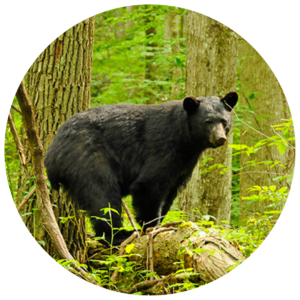EXPLORE: ANIMALS
Salamander Capital of the World
Great Smoky Mountains National Park is the perfect place to call home.
For all ages. The perfect combination of an abundance of water and the right temperature range makes the Smokies the perfect habitat for a variety of salamanders. Explore our videos and activities to see why they are the favorite animal of many park staff.
THE LAST DRAGONS
Protecting Appalachia’s Hellbenders
An intimate glimpse at North America’s Eastern Hellbender, an ancient salamander that lives as much in myth as in reality…. and in many waters, myths are all that remain of these sentinel stream-dwellers.

Smokies Salamanders
Great Smoky Mountains National Park summer high school interns assist a researcher in studying the park’s high elevation salamanders in this episode of Outside Science, Inside Parks.
All the Salamanders
Tremont’s ‘SmokiesCool’ Big Idea
There are millions of species on earth due to the adaptive nature of life. Biodiversity is a measure of the species richness, or total number of species in a given area. Great Smoky Mountains National Park is a high biodiversity. Salamander species for example, are more abundant in the park than anywhere else on earth.
Salamander Activities
Fish Life
Exploring and Restoring Diversity
Best for Upper Elementary and up. The Smokies is home to some of the greatest diversity of fish life. Explore our efforts to restore native species the Brook Trout and Smoky Madtom.
Saving Brook Trout in the Smokies
Learn more about the only trout species native to the Southern Appalachians, and the efforts by National Park Service biologists to strengthen their numbers.
Southern Salvelinus
Brook Trout Below the Mason-Dixon
Southern Appalachian Brook Trout are a geographically isolated strain of Brook Trout (Salvelinus fontinalis) that are facing a realistic possibility of disappearing. They are a valuable indicator species and the decline in brook trout populations is a reflection of the degradation of our beautiful streams. They are the only native trout (technically a char) to the Eastern United States. Because of the introduction of invasive Rainbow Trout (from the Western US) through state fish stocking programs, they are being outcompeted and brook trout populations are being even further reduced.
Fishy Fragments
Epic Underwater Expedition
North America has the greatest temperate freshwater fish diversity with over 800 known species. Little is known about the greater majority of these species and approximately 20% are in decline according to the United States Fish and Wildlife Service. Film maker Eric Malone went to over a dozen different states, multiple watersheds, and several dozen bodies of water to film underwater.

iScience Series: Discover Madtoms
Bears
A Smoky Mountain Favorite
For all ages. Bears are the number one thing visitors say they want to see when they visit Great Smoky Mountains National Park. Interact with a GIS map to see how bears move around the park and what they get into.

GPS BEARS
See where two GPS-collared bears have been throughout the park.

BEAR RESEARCH
Go behind the scenes with our long-time bear research partner.
Bears
A Smoky Mountain Favorite
For all ages. Bears are the number one thing visitors say they want to see when they visit Great Smoky Mountains National Park. Interact with a GIS map to see how bears move around the park and what they get into.

GPS BEARS
See where two GPS-collared bears have been throughout the park.

BEAR RESEARCH
Go behind the scenes with our long-time bear research partner.
WE ARE BEARS
Song of the Smokies Icon
More than just a cute fuzzy mascot, black bears are part of the culture, history, and natural ecosystems throughout the southern Appalachian mountains. But who speaks on behalf of the bears? Check out this music video that finally gives bears their say! It was created by Tremont Institute in partnership with Gamble Montessori High School in Ohio. Explore the history, life cycle and threats facing black bears, one of the most iconic species in the national park!
BLACK BEAR JOURNALING
Sketch along with Tremont Institute Teacher Naturalist Luke Schutzman as he explores the history and role of the American Black Bear in Great Smoky Mountains National Park. Luke takes you on an artistic journey from prehistoric times up to the current day, all on the pages of his sketchbook.
Butterflies
Colorful Critters
Best for elementary and middle school learners. Discover some of the butterflies that stop by Great Smoky Mountains National Park. In these activities you can learn about migration, insect tracking, and threats to butterfly habitats.
MONARCH’S GONE LYRICS
INSECT TRACKING ACTIVITY

PEOPLE & NATURE
While celebrating over 50 years of connecting people to nature, Tremont brings you unique educational experiences from our home in Walker Valley. Discovering the wonders of nature begins with observing the world around you- whether your home, schoolyard, or here in Great Smoky Mountains National Park.


